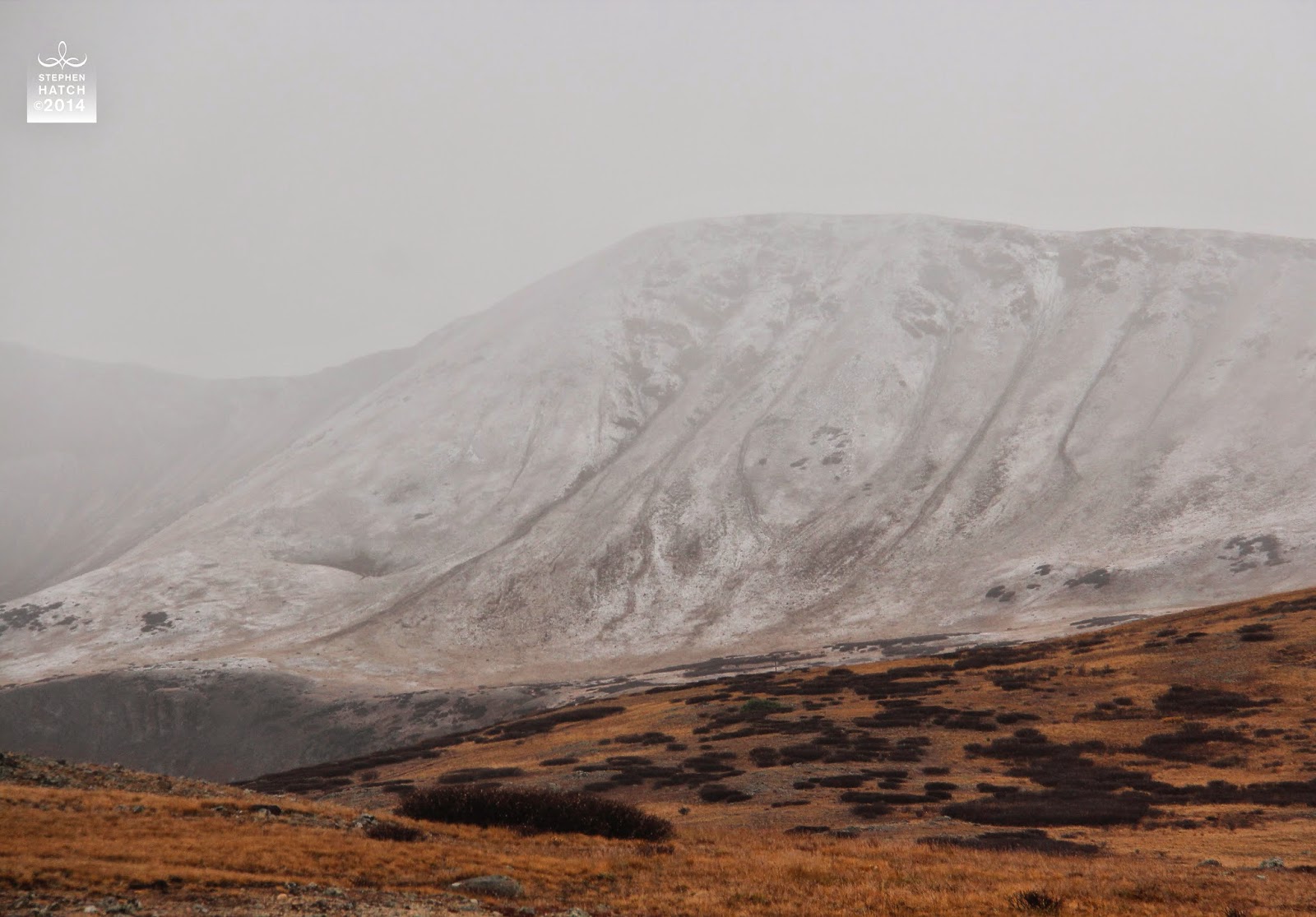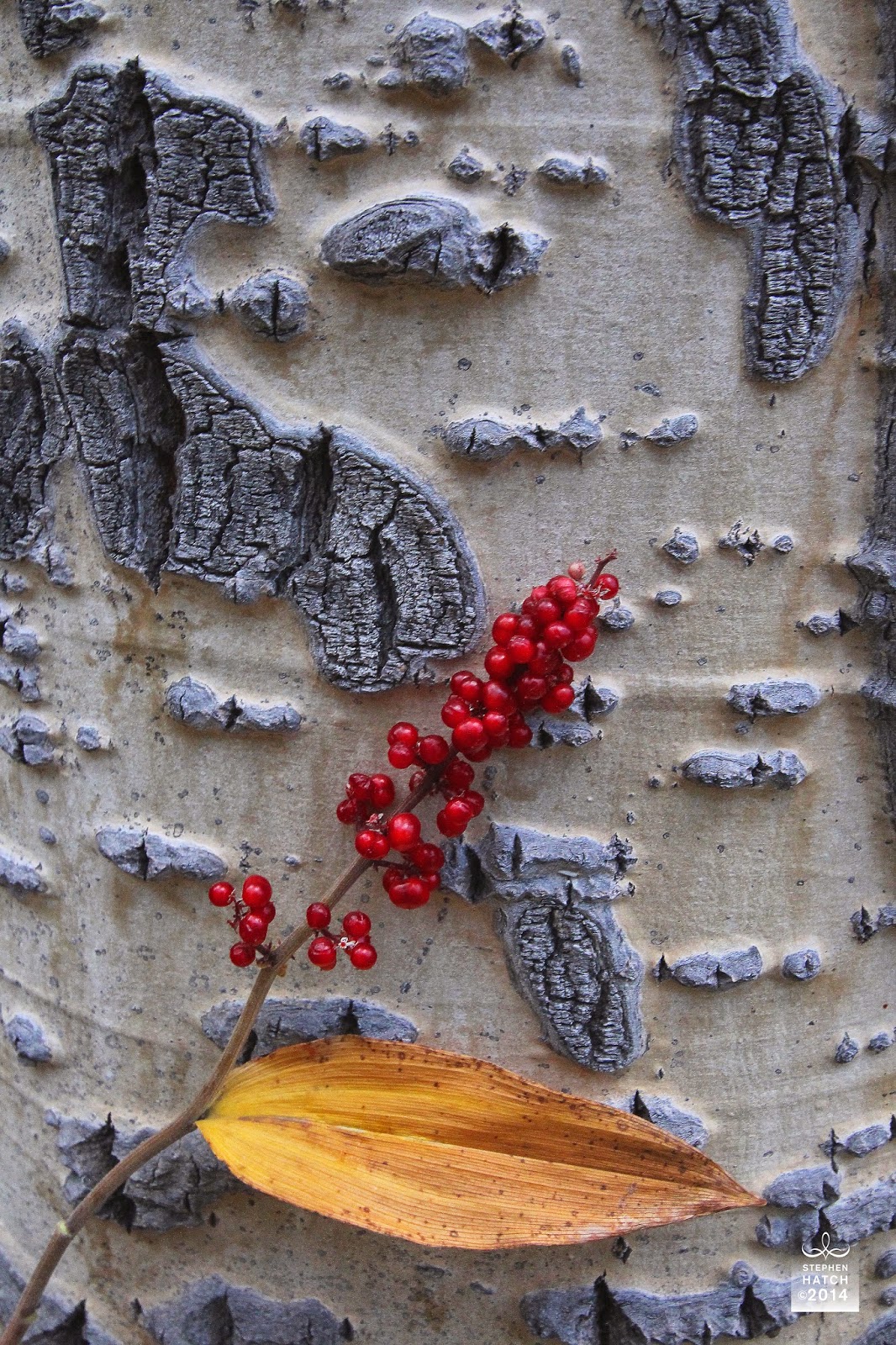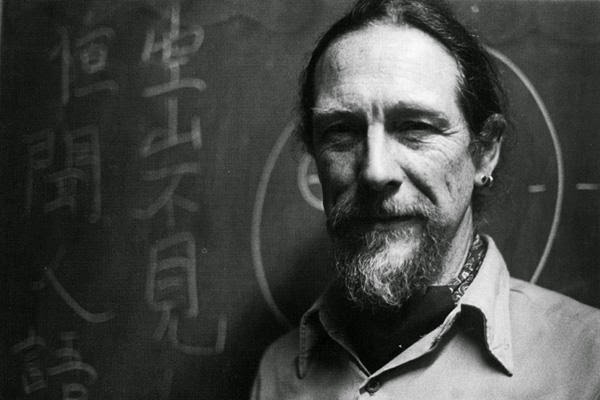Welcome! I am a contemplative thinker and photographer from Colorado. In this blog, you'll discover photographs that I've taken on my hiking and backpacking trips, mostly in the American West. I've paired these with my favorite inspirational and philosophical quotes - literary passages that emphasize the innate spirituality of the natural world. I hope you enjoy them!
If you'd like to purchase photo-quote greeting cards, please go to www.NaturePhoto-QuoteCards.com .
In the Spirit of Wildness,
Stephen Hatch
Fort Collins, Colorado
P.S. There's a label index at the bottom of the blog.
Tuesday, September 30, 2014
All things arise - unborn - out of spacious awareness and decompose back into it, only to arise yet again!
Yesterday, I visited the Great Stupa of Dharmakaya at the Shambhala Mountain Center near Red Feather Lakes, Colorado - about an hour from my home. I wanted to go when the aspen trees were gold - and on an overcast day - to minimize the contrast that so often occurs between the bright white of the Stupa and the relative darkness of the surrounding landscape. Shortly after I began photographing, a huge thunderstorm moved in! But first, I was able to take these photos!
I was intrigued to find some elk bones - a skull, several jaw bones and some vertebrae - lying in the grass right next to the Stupa on a bed of fallen aspen leaves. I also found a large fallen tree decomposing into beautiful reddish-colored mulch!
To me, these images of elk bones, fallen aspen leaves and decomposing mulch were the perfect embodiment of the Buddhist realization into impermanence. More specifically, they spoke powerfully to me of the fact that all physical phenomena (nirmanakaya) and energetic phenomena (sambhoghakaya) arise - magically, almost, and "unborn" - out of the sky-like expanse of dharmakaya, the fundamental "ground" of reality that we identify with during meditation practice. Together, these realms constitute the Trikaya, the Three Bodies of the Buddha. Liberation occurs when we learn to identify ourselves more with the Dharmakaya than with the realms of impermanence that occur with the sambhogakaya and nirmanakaya. Chogyam Trungpa Rinpoche, whose cremated ashes are housed within this Stupa, has this to say:
“Dharmakaya is like the sun, sambhogakaya is like the rays, and nirmanakaya is like the rays hitting the objects on the earth. Nirmanakaya is the physical situation, and sambhogakaya and dharmakaya are the level of mind . . . At the dharmakaya level, we are looking into enormous space. That particular enormous space—that inconceivable, enormous space—is the basis of the original unbornness . . . "
Trungpa describes the sense of humor or play that arises in us when we realize - surprise! - that all of phenomenal reality arises seemingly out of nowhere - out of "dharmakaya." Here, meditation practice contains an element of intrigue and play when we watch, spellbound, as all thoughts, emotions, and physical sensations arise magically out of the sky-like expanse of awareness, and then disappear back into it, only to arise yet again in the very next instant. The whole process is, we might say, like unspoken echoes arising out of nowhere!
In the Christian mystical tradition, this is expressed as the process by which all of reality arises out of the boundless inner abyss of divine LOVE, and then disappears back into it, only to arise yet again during each millisecond of time. The fourteenth-century German mystic Meister Eckhart puts it this way: "It is an amazing thing that something flows forth, and nonetheless remains within . . . All creatures flow outward and nonetheless remain within - that is extremely amazing!"
During interreligious dialogues, many have commented as well on the correspondence between the Trikaya and the Holy Trinity. In the Christian contemplative tradition, we have The Great Silence (the "Father"), the Word (the "Son"), and the joy arising from the other Two (the "Holy Spirit," which Thomas Aquinas calls the "Sigh" of the Godhead.) But because the Word (the Son) appears in the world yet never actually leaves the Great Silence of the Father, Eckhart sometimes implies - intriguingly - that we might more accurately call It an "Echo" of an unspoken word. "The Father speaks the Word unspoken," he exclaims. Accordingly, Eckhart refers to this process as a sort of "sport" or "play."
As others have pointed out, the Trikaya and Holy Trinity also correspond to the satchitananda of the Hindu tradition. Here, sat ("Being") is the Source out of which chit (Being's "Self-consciousness") and ananda (the "Bliss" that arises from this self-awareness) arise. This is again similar to some strands of Christian mysticism (e.g. St. Augustine) where the second Person of the Trinity is a kind of "mirror" in which the Source views [him]self. Here, the Spirit is then the joy (the ananda) arising from this self-reflection.
In any case, interpreting the seeming worlds of birth and death as a cosmic sort of "Play" in all three traditions is really quite amazing!
Photos: Elk bones, a decomposing log, and prayer flags flying in an aspen grove; The Great Stupa of Dharmakaya, Shambhala Mountain Center, Red Feather, CO; September 29, 2014
Autumn Aspen leaves embody the joy of life!
"Joy is the holy fire that keeps our purpose warm and our intelligence aglow."
Helen Keller
This past weekend, I hiked the Oh-Be-Joyful Pass Trail near Crested Butte.
What can be more joy-inducing than autumn colors, except, perhaps, for the fact that they are a reflection of one's own inner beauty?
Even the Subalpine Firs and Engelmann Spruces celebrate the joy of life when they catch Aspen leaves and display them like Christmas tree ornaments.
Photos: Scenes along the Oh-Be-Joyful Trail; near Crested Butte CO; September 26, 2014
Monday, September 29, 2014
The golden glow of autumn aspen trees embodies the self-emptying love of Christ
For me, the golden glow of the autumn aspen trees is a direct embodiment of the reality of Christ.
Not the predictable Jesus of conventional religion, the one who is forever claiming how great he is, or how different than us he is, or how much we need him to save us. Rather, this is the Christ who is perpetually and eternally SELF-EMPTYING, the one who says: "You will do GREATER things than I have done, because I am going to the Father" (John 14:12) - in other words, "because I am disappearing back into the Source."
Here, Christ becomes the warmth of a quiet, radiant love which melts all things into One, who disappears in the act of enabling them all to manifest THEIR OWN golden glow. This, I believe, is TRUE salvation! In so doing, he teaches US to act similarly - to become the potent force of love that quietly blends all beings into one Reality, while disappearing for all eternity from the need for recognition!
Photos: Aspens near Kebler Pass, CO; September 27 and 28, 2014
A moody day
Today,
the weather acted quite moody. Sunrise was not visible, but the side
of the mountain I was planning on photographing lit up briefly for
several minutes.
Then the rains moved in, and then - at higher elevations . . .
snow prevailed. Finally, as the clouds began to clear . . .
a rainbow appeared!
Photos: (Top) Sunrise on Beckwith Mountain, near Crested Butte; (Second) The rain moves in on the Castle Creek area, near Aspen; (Third) Snow on Independence Pass, near Aspen; (Bottom) A rainbow appears near Copper Mountain. All photos were taken in Colorado on September 28, 2014
Then the rains moved in, and then - at higher elevations . . .
snow prevailed. Finally, as the clouds began to clear . . .
a rainbow appeared!
Photos: (Top) Sunrise on Beckwith Mountain, near Crested Butte; (Second) The rain moves in on the Castle Creek area, near Aspen; (Third) Snow on Independence Pass, near Aspen; (Bottom) A rainbow appears near Copper Mountain. All photos were taken in Colorado on September 28, 2014
Thursday, September 25, 2014
What is this beauty in the landscape but a certain fertility IN ME?
"The
thought of what I am, of my pitiful conduct, deters me from receiving
what joy I might from the glorious days that visit me . . . [But] what
is this beauty in the landscape but a certain fertility IN ME? I look
in vain to see it realized but in my own life."
Henry David Thoreau
Photos: (Top and Middle) Aspen trees in Rawah Wilderness, CO, September 23, 2014; (Bottom) Berries and aspens in Rocky Mountain National Park, CO, September 19, 2014
Henry David Thoreau
Photos: (Top and Middle) Aspen trees in Rawah Wilderness, CO, September 23, 2014; (Bottom) Berries and aspens in Rocky Mountain National Park, CO, September 19, 2014
Wednesday, September 24, 2014
Autumn is a second spring where every leaf is a flower.
"Autumn is a second spring where every leaf is a flower."
Albert Camus,
French Philosopher
Photos: (Top) Aspen leaf with raindrops, Rawah Range, Colorado State Forest State Park, CO; (Middle) Ruby-red aspen grove, Rawah Range, CO; (Bottom) Aspens and sunset on Clark Peak, Rawah Range, CO. All three photos were taken on September 23, 2014.
Tuesday, September 23, 2014
Autumn is a flame running through the mountains.
"Autumn burned brightly, a running flame through the mountains, a torch flung to the trees."
Faith Baldwin,
American author
Photos: (Top) Hallett Peak and Aspen trees on Bierstadt Moraine, Rocky Mountain National Park, CO, September 20, 2014; (Middle Red berries and aspen trunk, Rocky Mountain National Park, CO; September 19, 2014; (Bottom) Gnarled Limber Pine, Golden Aspen trees, and rock formations, Vedauwoo Recreation Area, Medicine Bow National Forest, WY, September 22, 2014
COOL nights produce WARM Fall color
Isn't it fascinating that Autumn produces such warm colors just as the weather becomes colder? In fact, one of the major causes of the color change is the increasing number of hours each day when the temperature is cool, a phenomenon that comes with lengthening nights. Thus, warm colors are dependent on cooler nights.
.
To be more accurate, it is actually the combination of warm Indian summer days and increasing hours of nighttime cold that causes the leaves to change color. As always, yin and yang are co-dependent on one another. We might say, therefore, that heat is the warm aspect of cold, and cold is the cool aspect of warmth. How magical life in this world is!
Photos: (L) Aspen trees on Bierstadt Moraine; (Top Left) Various shades of aspen color; (Bottom Left) An aspen leaf is backlit by the evening sun; All three photos were taken at Rocky Mountain National Park on July 19-20, 2014
Monday, September 22, 2014
Sunday, September 21, 2014
Friday, September 19, 2014
A true insight is able to walk and dance.
"We do not belong to those who only get their thoughts from books, or at the prompting of books. It is our custom to think in the open air, walking, leaping, climbing, or dancing on lonesome mountains by preference, or close to the sea, where even the paths become thoughtful. Our first question concerning the value of a book, a man, or a piece of music is : Can it walk? or still better: Can it dance?"
Friedrich Nietzsche
Photo: Pink Heather and Mount Rainier, Mount Rainier National Park, WA; July 26, 2014
Thursday, September 18, 2014
Gary Snyder's Critique of Postmodern Philosophy
"[But] it is not impossible to get a pretty accurate picture of Nature with a little first-hand application - no big deal, I'd take these doubting professors out for a walk, show them a bit of the passing ecosystem show, and maybe get them to help clean up a creek."
Gary Snyder
Photos: (Top) Beargrass with Goat Rocks in the background, Mt. Rainier National Park, WA, July 26, 2014; (Middle) Cliff Paintbrush in the fog, Mt. Rainier National Park, WA, July 26, 2014; (Bottom) Vidae Falls, Crater Lake National Park, OR; July 28, 2014
Photos: (Top) Beargrass with Goat Rocks in the background, Mt. Rainier National Park, WA, July 26, 2014; (Middle) Cliff Paintbrush in the fog, Mt. Rainier National Park, WA, July 26, 2014; (Bottom) Vidae Falls, Crater Lake National Park, OR; July 28, 2014
Subscribe to:
Posts (Atom)


















































